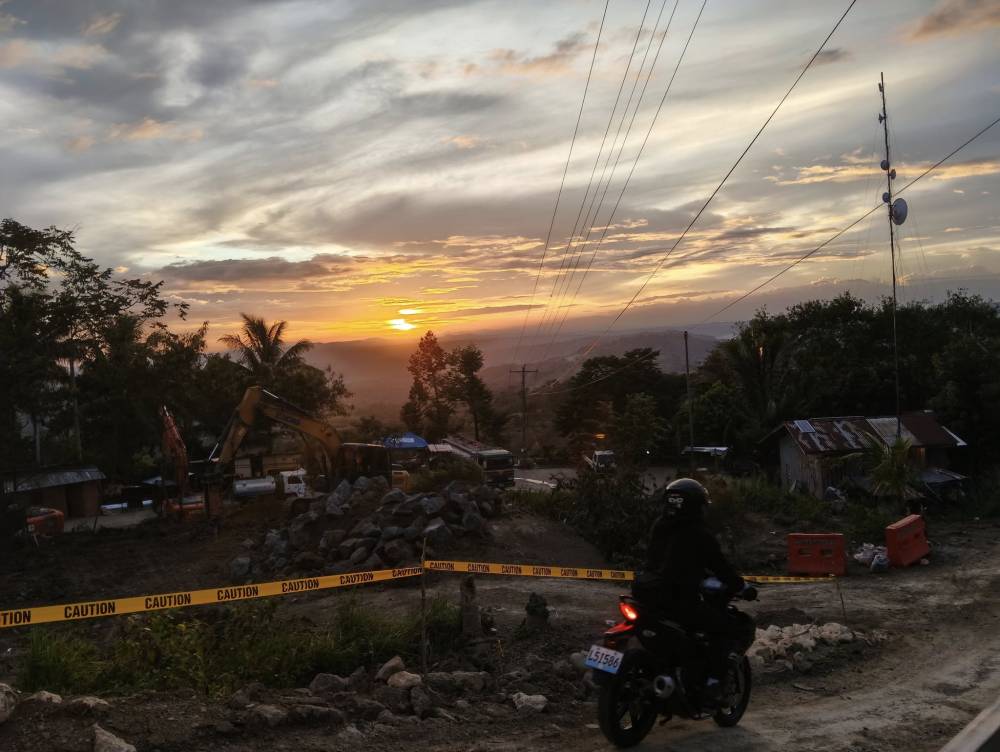Mindanao road collapse losses: P187M daily

QUEZON, BUKIDNON—Several days ago, residents struggled to push a low-powered ambulance up the steep, makeshift road at Sitio Kipolot in Barangay Palacapao here, just a short distance from where a deadly landslide on Oct. 18 led to a collapse of a portion of the Bukidnon-Davao (BuDa)road, a vital economic lifeline between Northern Mindanao and Davao regions.
Using an improvised cable chain and rocks wedged behind the wheels to prevent the ambulance from sliding, bystanders worked together as other vehicles lined up below, waiting for their turn to navigate the slope.
The scene has become familiar to motorists relying on the improvised single-lane path carved beside a pedestrian pathway newly constructed by the Department of Public Works and Highways (DPWH).
The narrow access route, created by residents through “bayanihan” (community cooperation) efforts, emerged out of necessity after the landslide cut off mobility for more than a month now.
With no official temporary road available, locals built their own to ensure they could continue transporting farm goods and traveling to nearby areas.
Although other alternatives are available, the BuDa Road is the shortest and most efficient route between Davao and Northern Mindanao regions, the main engines of economic growth in the southern Philippines.
But the closure of the six-lane road has forced commuters and cargo forwarders to take the Talaingod and Kabacan routes, adding between 60 and 100 kilometers to their travel.
At the very least, the additional distance adds to trip delays, fuel consumption as well as wear and tear of vehicles, said Department of Economy, Planning and Development (DEPDev) regional director Mylah Aurora Faye Cariño.
Economic impact
In consideration of all these, DEPDev calculated the impact to the economy of the continued disruption to logistics due to the condition of the BuDA Road.
The DEPDev study had shown that daily economic losses amounted to P187 million, which could balloon to P14.07 billion by the end of the year, or about 1.1 percent of Northern Mindanao’s gross regional domestic product.
If the situation lingers, the additional cost can have an inflationary push, meaning, added up to the cost of goods passed on to consumers, Cariño explained. —WITH A REPORT FROM FROILAN GALLARDO

















